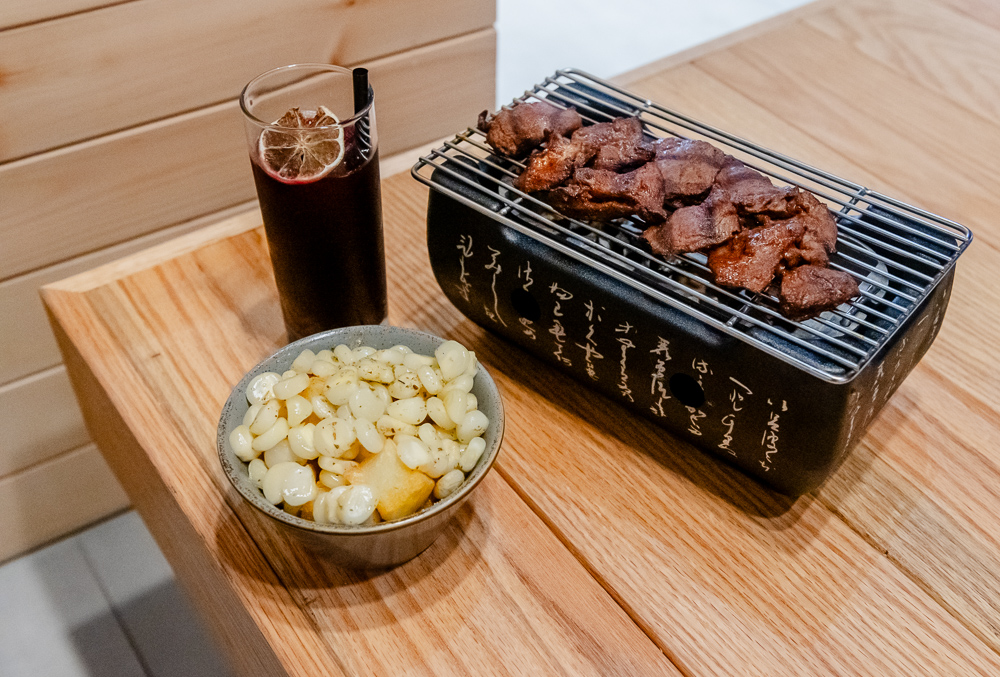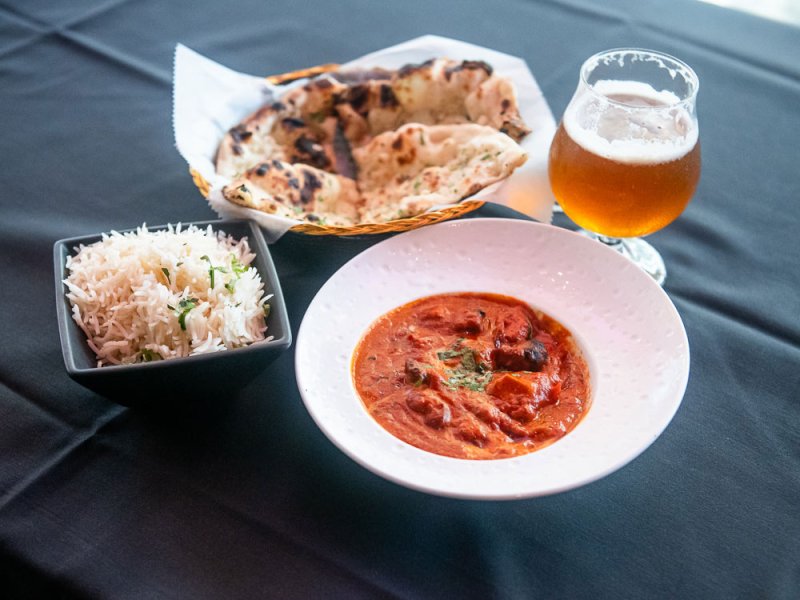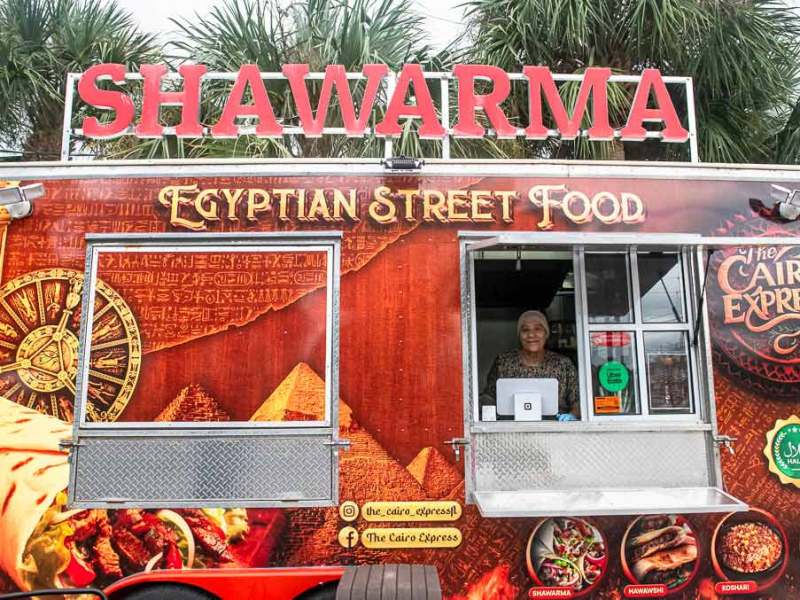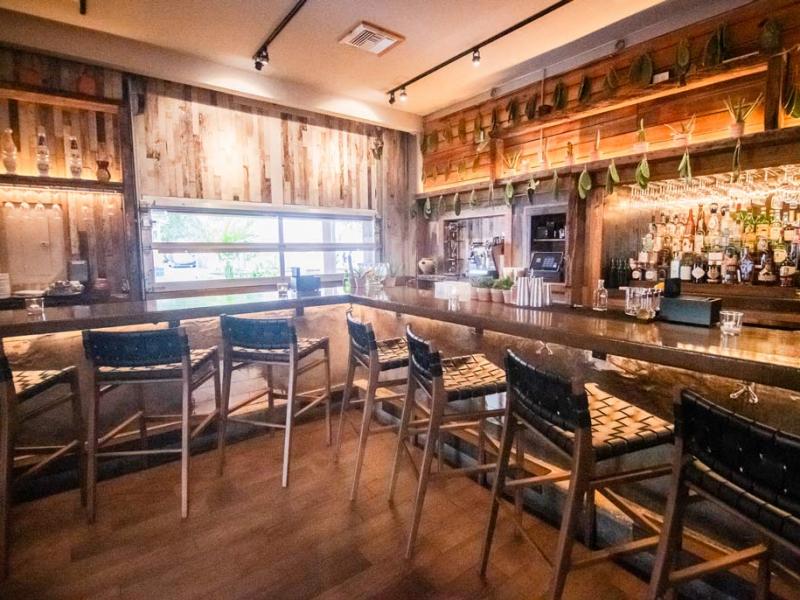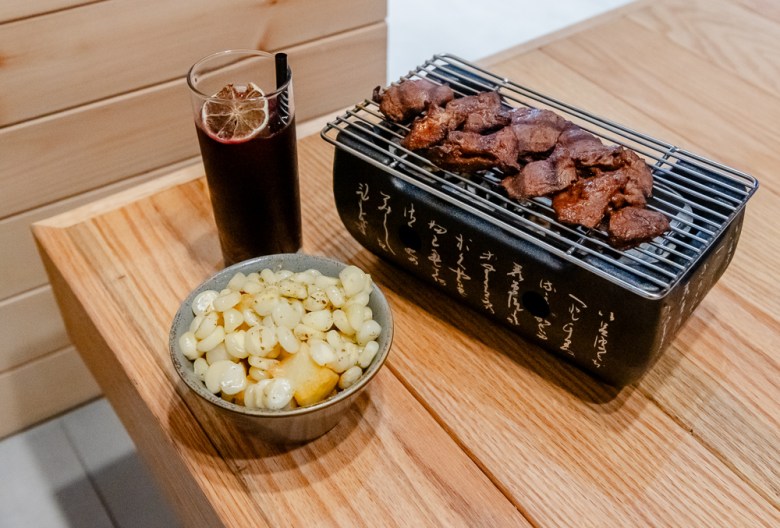 Credit: Matt Keller Lehman
Credit: Matt Keller Lehman
By my estimation, I’ve reviewed more than a dozen Peruvian restaurants in this city over the past 20 years, a list that includes both currently open and now-shuttered establishments: Brazas Chicken, Pollo a la Brasa Mis Amores, El Buzo, 8-8 Panda, Lima 41, Ceviche House, Taste of Peru, Memories of Peru, Gaviota, Mo-Chica, Papa Llama, Aji Ceviche, Pisco Peruvian Gastrobar and Mares, which now goes by the name Cev’ich Central. Yet after perusing the menu at each and every one of those restaurants, I found myself silently bemoaning the absence of rocoto relleno, a dish that became an instant favorite of mine when I first got a taste of it at the Casa Andina in Arequipa, Peru.
Then I had a chat with Chris Jungbluth, the affable owner of Lima 1535 on Lake Underhill Road, who told me rocoto relleno was a favorite of his as well and that he planned to include that ever-so-rare Peruvian delight on the menu. “Come back on Thursday and our chef will prepare it,” he told me. When I returned and saw that apple-sized, fiery-red Andean pepper ($38) stuffed with bits of filet mignon seasoned with ají panca, ají amarillo and cooked with sultanas, olives, boiled egg and crushed peanuts, my salivary glands lost their shit. A sheet of melted queso paria, an Andean white cheese, was draped over the roasted orb, while an egg-milk sauce pooled around the base. The rocoto may look deceptively like a red bell pepper, but it’s hot as hell. De-seeding, de-veining and blanching the peppers with a bit of sugar and vinegar makes it a lot less explosive. It’s served with pastel de papa, a potato and cheese square, as well as a halved boiled egg.
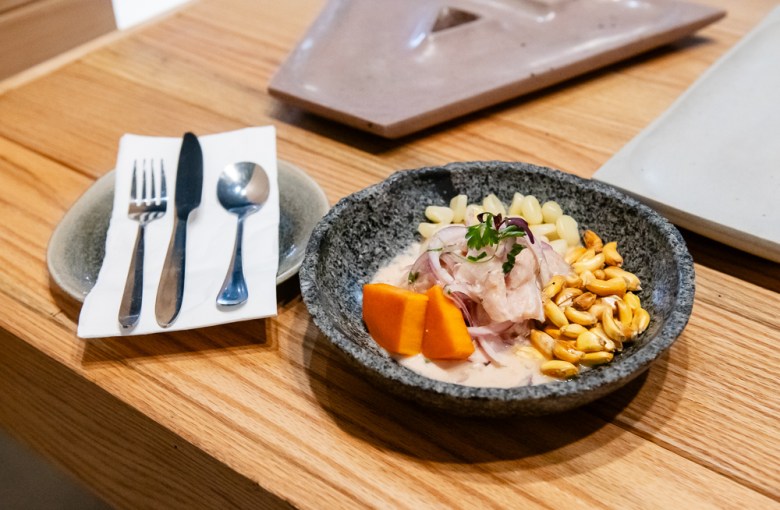 Credit: Matt Keller Lehman
Credit: Matt Keller Lehman
Interested patrons must call ahead and “reserve” the dish because of the time-consuming process of making it. Uninterested patrons have a lot else to choose from. How about classic lomo saltado, but with wok-fired alpaca ($36) instead of beef? Or a ceviche carretillero ($27), a textural mélange of corvina in a bracing leche de tigre sauce, topped with red onions on one side of the plate and crispy fried squid “chicharron,” sweet potato, crunchy cancha and fat choclo kernels on the other side. Those plates, BTW, are made from hand-carved stone. They’re heavy, and gorgeous, much like our bulbous midriffs were on this particular visit. On a subsequent visit, they were laden with tostones tarts ($23) filled with lomo saltado, an absolute winner of a dish and a can’t-miss fave for even the most finicky of palates.
When thrice-boiled, herb-marinated grilled octopus ($26) came out, we didn’t expect it to be served on a tabletop charcoal burner. It made for nice visuals, but the charred tentacles made for nicer victuals. I also didn’t expect another Peruvian memory to be jogged, but that’s precisely what happened when gratinated scallops with butter, Parmesan and lime on the half-shell ($20) were brought to the table, along with some burning embers set on the plate for effect. The memory: eating scallops prepared this way for the very first time at the iconic La Rosa Náutica in Lima, Peru, a restaurant perched directly over the Pacific Ocean.
It’s really all a testament to head chef Joar Aris and his kitchen prowess. He grew up in Callao, just outside of Lima, and learned to cook from all the women in his family, including his signature papa a la huancaína ($16), a creamy potato dish that’s as Peruvian as chicha morada ($10) and pisco sour ($16), both of which beverages are served with aplomb at Lima 1535. In fact, Jungbluth, who happens to be a pilot, imports many of the ingredients — from corn and rocoto to alpaca and scallops — from Peru and makes frequent jaunts to Miami to pick up the goods. He also runs a commercial power-washing business and did a bang-up job cleaning up the Lake Underhill Plaza, which also includes Zorba’s and Las Cazuelas. Expectedly, Lima 1535’s interior is spiffed up with a bright, modern aesthetic, courtesy of Jungbluth’s wife, Elisa Quiroz, along with unique design fixtures brought in from Peru.
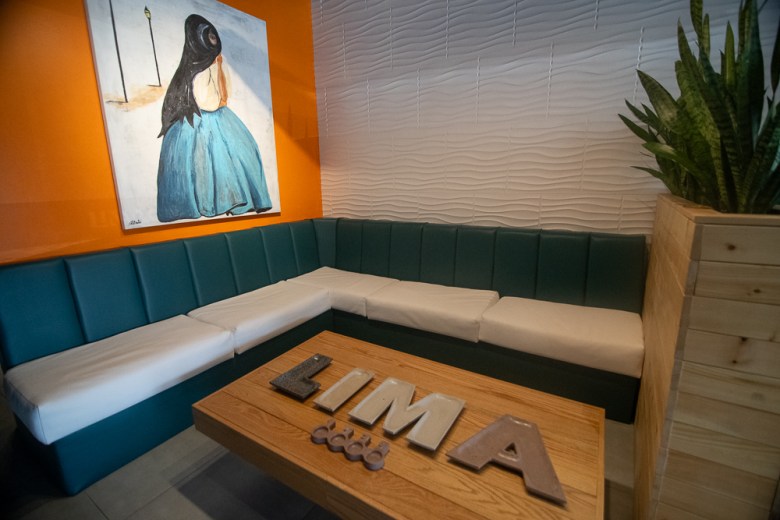 Credit: Matt Keller Lehman
Credit: Matt Keller Lehman
The name, in case you’re wondering, is a reference to the year in which Lima was founded by that oft-despised conquistador Francisco Pizarro. Much can be said about the foodways of the colonized in South America but, for now, I’ll focus on alfajores ($10), those delicate cookies filled with manjar blanco, or Peruvian dulce de leche, that have an interesting food path of their own: Moors introduced the sweet treat to the Iberian Peninsula and then the Spaniards bought it to South America. The airy, crumbly, almost shortbread-like versions here are made by Jungbluth’s mother, Liliana Benites, and his sister, Astrid Jungbluth.
Their cookies, like most everything I ate at Lima 1535, made a New World Man out of me.
Subscribe to Orlando Weekly newsletters.
Follow us: Apple News | Google News | NewsBreak | Reddit | Instagram | Facebook | Bluesky | Or sign up for our RSS Feed
Related Stories
Kudos to Jala’s owner for hiring chefs straight from India. They clearly know what they’re doing
There are no shortcuts at Cairo Express, the food truck run by Gigi Elgharbawy and her children
Dos hombres Jason Campbell and Nick Grecco fire up the kitchen at June
This article appears in Oct. 22-28, 2025.
Related

